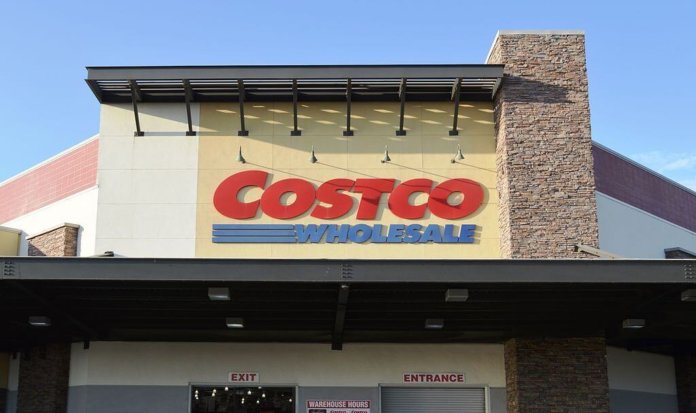
If you’ve ever lugged a 12-pound jar of cashews into the trunk of your car, there’s a pretty good chance you’ve been to a Costco. The retail warehouse is best known for offering consumers large and bulk quantity items and lower prices than many of their competitors.
Headquartered in Issaquah, Washington, Costco has 741 locations (as of 2017) employing more than 231,000 employees around the world in countries such as the United States, Canada, Mexico, United Kingdom, Japan, South Korea, Taiwan, Australia, Spain, Iceland, and France. By the end of 2017, the company had earned nearly $130 billion in revenue.
Beyond just numbers, what sets Costco apart from other department stores or major retailers is when you are there, it doesn’t feel like any shopping experience you’ve ever experienced. The sheer size of the physical space can be overwhelming. And where else have you had the option to buy a 12-pack of dish detergent, thus solving your dish detergent needs for the next three years?
Origins
There is no doubt Costco has its own unique way of doing things which trace all the way back to before Costco was what we know it to be today. The company’s beginnings go back to 1976 when Sol Price opened up the first Price Club. A year earlier, he parted ways with a chain of discount stores he had been a part of and he had the idea of opening up a warehouse-type retail operation. He converted an old airplane hangar in San Diego into the very first Price Club.
According to Price’s son Robert, acting upon this type of vision was not out of the ordinary for Sol Price. “My dad, his approach to things, was a very creative person. My dad basically looked at things to see what was wrong with them so he could do it better,” Robert said in a 2016 San Diego Tribune article.
Business for the new warehouse retail concept started slow but eventually turned around. One of the key people in making that original San Diego Price Club work was a man named Jim Sinegal. Sinegal started as a bagger and eventually worked his way up to manager at the age of 26.
In 1983, Sinegal took everything he learned about the warehouse retail business and opened up the first Costco. Ten years later, Sol Price declined an offer from Sam Walton to merge with Walmart and instead, merged with Costco.
What makes the Costco history so fascinating is that much of their success can be attributed to retail practices that, on the surface, can seem counter-intuitive. So, let’s look a little closer at three lessons we can take from Costco’s success.
Lesson #1 – Membership Has Its Privileges
Asking consumers to pay for access to your store would certainly have raised more than a few eyebrows. Historically, retailers have tried every trick under the sun the convince fickle shoppers to darken their door. Asking them to pay to do so would surely be a recipe for disaster.
What that point of view fails to grasp is the powerful effect of basic human psychology. This is an aspect Ivey Business School Professor Allison Johnson touched on in the February 2017 Financial Post article How Costco Canada breaks retail rules to win.
“Once you have paid to belong to something, once there is a cost to enter, you feel more strongly attached to it. There is a psychological sunk cost, and an exclusivity. They check your card at the cash. It makes it seem as though there is something going on that is special in there.”
The results speak for themselves. Costco’s renewal rates are 91% renewal in the U.S. and Canada and 87% internationally. They even have tiers where you can opt for a more expensive executive membership. Company data has shown that the 38% of members who are Executive level spend more than others.
A Costco-type membership may not directly translate to your business but that doesn’t mean you can’t find ways to create a sense of exclusivity within your customer base. Find a way to make your customers feel like they are part of a privileged group and you will reap the rewards.
Lesson #2 – The High Reward of Low Prices
Many retailers operate by trying to keep their profit margins high and attracting customers by offering huge savings on a select number products at select times throughout the year. Costco operates on the principle that by keeping prices low all the time customers will come back, thus creating higher profits through higher volume.
To execute this strategy, Costco employs a tactic of capping margins at an average 10.6%. By setting a maximum price markup for their inventory, Costco is able to justify their membership fees and reinforce customer loyalty. Also, by selling items in bulk or multi-pack options, it helps them to be able to keep margins low.
It’s very likely this strategy was one Sinegal learned from Sol Price. In 1986, Price said, “ We think the secret of good mass merchandising is the intelligent loss of sales. It means you have to decide what sales you are prepared to live without. Can you live without credit cards that cost you two points? Can you live without advertising? Can you live without $35-to-$40-a-foot occupancy costs for a prime location?”
If you can make similar tough choices to keep your prices low, you’ll likely reap the benefits in the long run.
Lesson #3 – It Pays to Pay Higher Wages
“Awfully inbred” hardly seems like a compliment or anything to aspire to. And yet, when Costco VP of HR John Mathews said it, he was noting the trend that the company has an amazing track record of keeping employees within the Costco family.
How amazing? How about the fact that 70% of its warehouse managers started out as cart pushers and cashiers?
So what’s the secret to their success? It’s not much of a secret at all. Costco has a generous wage and compensation offering. In the U.S., the average hourly salary falls around $21 by way of comparison Walmart comes in at between $12-$13). Of course, Costco employment also includes health benefits, ample vacation time and a 401(k) match.
What may be surprising is this is a designed strategy to – get this – keep costs down. Costco takes a big picture approach that factors in the generally accepted formula that
it can cost between 40-150% of an employee’s annual salary to replace him or her. The less employee turnover, the more money the company saves. The average annual turnover rate is 5% for employees and 1% for executives.
According to Costco CFO Richard Galanti, there are no plans to alter the course anytime soon.
“Could Costco make more money if the average wage was two or three dollars lower?” asks Galanti. “The answer is yes. But we’re not going to do it.”
Short-term thinking says keep your labour costs as low as possible by paying employees the bare minimum. The lesson from Costco is that a longer-term approach can be more profitable for your business.










